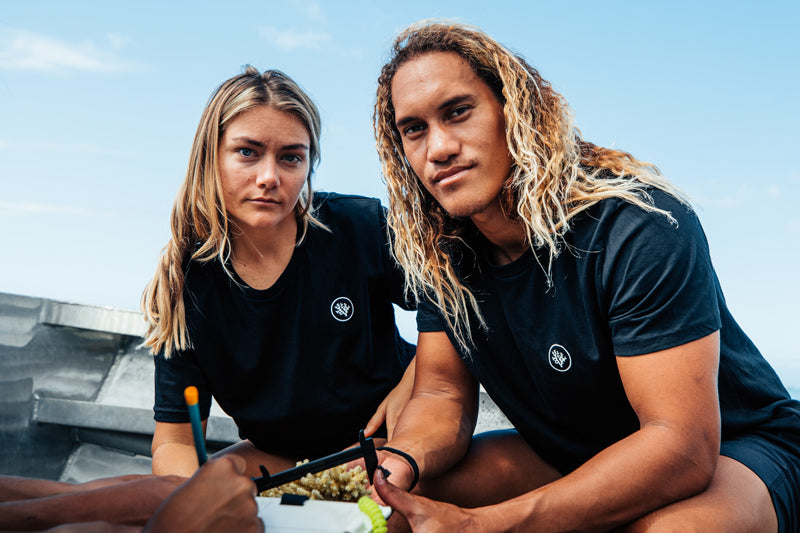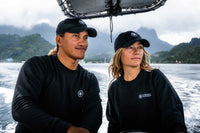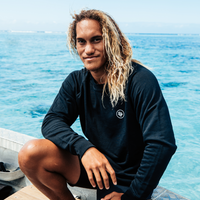FREQUENTLY ASKED QUESTIONS
WHAT IS CORAL GARDENER AND WHAT DO YOU DO?
Coral Gardener is an organization dedicated to the restoration and conservation of coral reefs. We cultivate and transplant corals to damaged reefs to help restore marine biodiversity and ecosystem health.
WHAT’S THE ADOPTION PROCESS?
When you adopt a coral, you become part of an important mission to restore our ocean's ecosystems. Here's what happens next:
Step 1: Your Adoption Begins
After adopting your coral, you'll receive a beautiful digital certificate perfect for sharing on social media. You can track all your coral adoptions through your personal profile on the Track My Coral page.
Step 2: Nursery Growth
As soon as we fill a nursery with new coral fragments, we'll assign specific fragments to adoptions. This means you'll be able to see and track your actual coral fragment as it grows in our underwater nursery.
Step 3: Reef Restoration
When your coral fragment reaches maturity, our marine experts will carefully transplant it onto damaged reef areas. This crucial step helps revitalize the reef and strengthen the entire marine ecosystem. Throughout this process, you'll receive personal updates from our field team about your coral's growth and impact.
Thank you for being part of our reef restoration community! 🌊 Your support makes a real difference in protecting our ocean's future.
HOW CAN I TRACK MY CORAL?
You can see the coral you adopt with your own eyes, and follow the journey to the reef on our track my coral page. Once the coral is in our nursery, we'll email you pictures and send you personal updates from the field.
HOW CAN I CHANGE MY PUBLIC USERNAME?
You can change your username that is visible on the Track My Coral page by clicking here.
Important: Please use the same email address that you used when making your coral donation to ensure your tracking information stays connected
HOW CAN I GIFT MY CORAL?
You can gift one or more corals to a loved one after adopting them. Once your purchase is complete, you will receive an email with a link to our personal Coral Gifting Form.
Through this form, you can specify the recipient of your (first) coral and include a personal message, if desired.
If you purchased multiple corals, you'll need to fill out the form separately for each recipient.
The recipient will receive a personalized email with your thoughtful gift directly.
I DIDN’T RECEIVE MY CORAL CARD
We are sorry about that. Have you checked your spam folder? The email with the Super coral card sometimes ends up there. If it is not there, you can email us at support@coralgardeners.org and our team in charge will be happy to sort this out for you.
HOW CAN I TRACK MY ORDER ?
Click here to track your order
CAN I ADOPT IF MY CURRENCY IS X?
You can adopt online from anywhere in the world. Even if adoptions are made in USD on our website, the currency conversion will be made to your payment method.
IS MERCH TRUE TO SIZE?
Our T-shirts, sweatshirts, and hats are true to size, but keep in mind they are based on a European fit, which tends to be smaller. If in doubt, round up one size for a loose fit.
DO YOU ACCEPT OTHER FORMS OF PAYMENT BESIDES CREDIT CARD?
Yes, we do accept PayPal as well.
WHERE DOES THE MONEY GO IF I DONATE?
100% of the funds support our mission and will help us plant more corals, raise awareness locally and globally, and develop technology for the reef.
HOW ORGANIZATIONS CAN HELP?
It will take a full, global effort to fight climate change and revitalize our oceans. We're providing actionable steps for each person, organization and group of people, from wherever they are to join our mission and help us save the reef. A few ways to help: For individuals – Adopt a Coral, Donate directly to our mission, or Shop our merch, all on our website: coralgardeners.org. For organizations – Join our B2B adoption program, donate a percentage of sales, or Become a Partner to help fund our mission. For our community – Share our mission to help us spread awareness to help us save the world's coral reefs before it's too late. If we do nothing, coral reefs will be virtually extinct by 2050. So take one of these steps of tangible action to join the fight and Coral Gardeners family
CAN I BECOME A VOLUNTEER?
Thank you for your interest in Coral Gardeners - we're excited that you would like to work with us! Due to the high volume of applications we receive and to keep the playing field level for everyone, we only accept applications through our application portal. You can find our current job openings here with links to our application portal. Thank you for your understanding.
I'D LIKE TO START A CORAL REEF RESTORATION PROJECT - HOW DO I GO ABOUT IT?
Thank you for being passionate and interested in restoring the coral reefs! The ocean needs more people and organizations to take part in securing a future for these magnificent ecosystems.
We’ve been at this since 2017 and are still learning something new each and every day.
Here are some of our recommendations for starting a successful coral reef restoration project:
First, does the reef need restoration and how likely is it to succeed? Has there been a reef before where you plan to do your restoration project? Has the local source of degradation been addressed and mitigated? Only proceed with a project if you can answer yes to both of the above, otherwise you’re essentially growing and planting corals that will die because they are likely to be overgrown by algae, dislodged by currents, or covered by sediments. Keep in mind that baby corals need to be cared for and without proper maintenance and monitoring, they likely won’t survive.
Second, do you know which permits you need to collect, grow, and plant corals? Depending on the country/region/state you’re located in, different laws apply. Please make sure to secure the relevant permits before doing any work with corals. In many places, coral reefs are endangered, and we want to ensure small-scale efforts are not causing more harm than good.
Third, make sure you have enough financial resources and the right team in place. Restoring coral reefs is not cheap and requires a continuous inflow of funds. Do you have a plan in place for how you’ll get those funds year after year? You’ll also need an all-star team to pull this off. From marine biologists to boat captains to someone who’s handy with hardware to set up and fix nurseries. Plus they need to be willing to work day in and day out in sometimes rough conditions.
Once you meet the above criteria, you can begin developing a project. Below, we’ve compiled a list of public resources that outline best practices:
- Reef Resilience Network
- Restoration toolkit (a really good overview of the restoration process, methods, and things to keep in mind)
- Online trainings (including Coral Reef Restoration)
- Webinars (covers timely topics such as bleaching response)
- Article summaries (heavy on science - good to go deep on a specific topic)
- Case studies
- Coral Restoration Consortium (has resources on the following topics)
- Capacity Building
- Genetic and Population management
- Propagation and Outplanting
- Restoration Planning and Management
- Restoration Site Monitoring
- Spawning
- Species Fact Sheet
- Other relevant organizations
- International Coral Reef Initiative
- Initiative française pour les récifs coralliens
- Coral Reef Restoration: A guide to coral restoration method
Thank you for all you do to save coral reefs and we wish you the best of luck with your project!
If you find that your project does not yet meet the essential criteria for a successful project, there are still many ways to get involved in ocean conservation. For example, find a local NGO that relies on volunteer support or find a role in ocean conservation via ocean job boards such as WiseOceans, Schmidt Marine, Seven Seas Media, and Key Conservation.
HOW CAN I/MY ORGANIZATION COLLABORATE WITH CORAL GARDENERS TO RESTORE A CORAL REEF WHERE WE LIVE?
So you have a project and are looking for a partner! We want to support as many organizations as we can. At the same time, we have a limited capacity and as we scale our work, we’re looking for specific elements in collaborations, including:
- A reef that needs restoration, where there used to be a thriving ecosystem
- A project which has necessary government permits and community support
- A team with the expertise to carry out science-based coral reef restoration
- A sustainable source of funding to last multiple years
If your project meets the above criteria, please send us a message to info@coralgardeners.org with all the relevant information regarding your project, including any website. We will get back to you if your project is aligned with our mission/vision and we have the capacity to support!
While we’re not able to engage in collaborations that don’t meet the above criteria, we’re happy to know you are passionate regarding ocean conservation and that you desire to further the movement. We’ve compiled a list of public resources that outline best practices, which you’ll find in the answer to the question “I’d like to start a coral reef restoration project - how do I go about it?”







